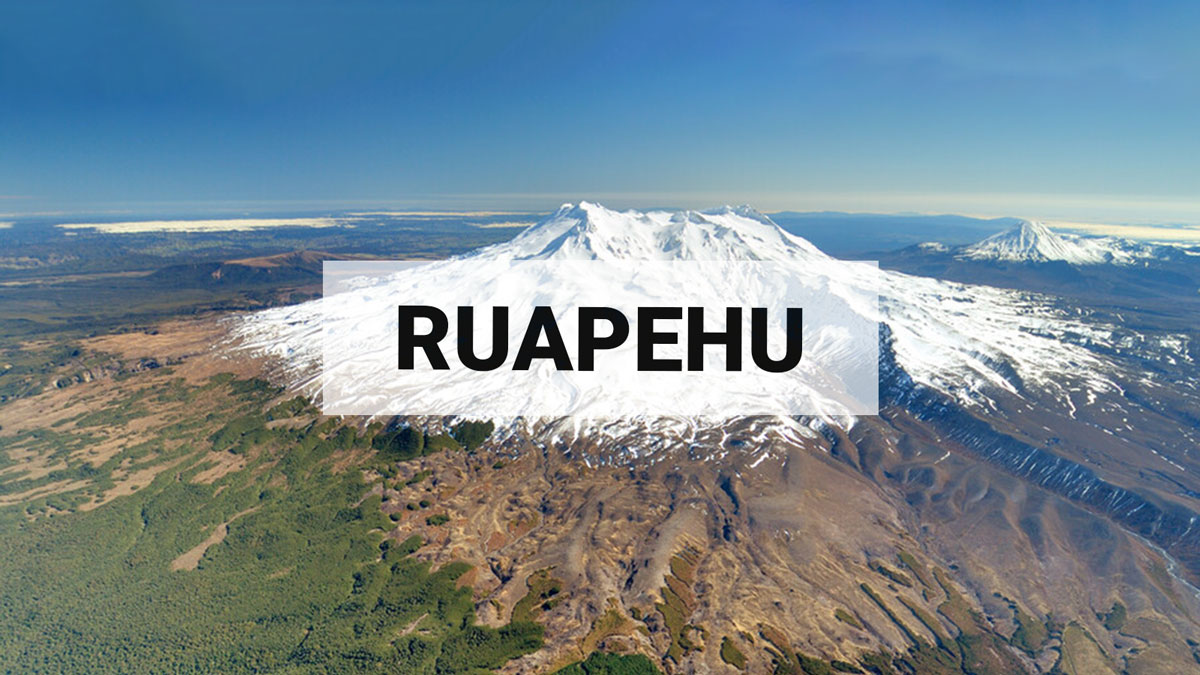
Minor volcanic unrest continues at Mt Ruapehu as lake temperature slowly increases. Volcanic Alert Level remains at 1.
Over recent months Te Wai ā-moe (Ruapehu Crater Lake) has remained cool but recent data suggest a weak heating trend is underway. The lake temperature is now around 10°C to 11°C, slightly up from the low of 8°C. Our gas monitoring sensors continue to measure low–moderate volcanic sulphur dioxide (SO₂) emissions, and volcanic tremor is still weak. An eruption remains unlikely. The Volcanic Alert Level remains at 1 and the Aviation Colour Code at Green.
There are now signs of slow reheating of Te Wai ā-moe (Ruapehu Crater Lake) which has increased in temperature by 2–3ºC since mid-October. The daily average is currently around 10–11ºC, but that is still considered a low temperature.
Te Wai ā-moe started to cool during February, from about 30 ºC, to a low point of 8 ºC in early October. During that cooling, the amounts of sulphur dioxide (SO₂) gas coming out through the lake reduced and volcanic tremor also declined, consistent with the cooling of the hydrothermal system beneath the lake. With decreasing upward heat flow, we also expected some mineral sealing to happen beneath the lake, slowing the rate of gases passing through lake. While the amount of SO₂ gas did decline between February and October 2024, it did not stop which shows that the vent remained partially open throughout that cooling episode. That is consistent with observations of weak upwellings in the lake and floating strands of sulphur on the lake surface.
While the crater lake seems to be heating up again, it is likely that the sub-lake vent remains partially sealed. Should conditions deep inside the volcano change to produce a significant upflow of gas, it is possible a partly sealed zone below the lake could rupture and produce a small eruption. In the past, small eruptions have been seen during heating phases, but we have not recorded any deep seismic changes and in the current state of low-level unrest, the likelihood of an unheralded eruption remains low. Our recent observations are consistent with ongoing, low-level volcanic unrest at Ruapehu. We expect the lake to slowly heat (about 1 ºC per day) during the coming months as part of a typical Ruapehu heating-cooling cycle.
Monitoring indicators remain consistent with a low level of volcanic activity. As a result, the Volcanic Alert Level remains at 1. The Aviation Colour Code remains Green.
More information:
Mt Ruapehu is an active volcano and has the potential to erupt with little or no warning when in a state of minor volcanic unrest.
The Volcanic Alert Level reflects the current level of volcanic unrest. The Volcanic Alert Level should not be used to forecast future activity.
Volcanic Alert Level 1 indicates the primary hazards are those expected during volcanic unrest: steam discharge, volcanic gas, earthquakes, landslides, and hydrothermal activity. While Volcanic Alert Level 1 is mostly associated with environmental hazards, potential for eruption hazards also exists and eruptions can still occur with little or no warning. Volcanic Alert Levels 3, 4 and 5 are reserved for eruptions with varying impact distances.
For information on access to the Mt Ruapehu area, please visit the Department of Conservation’s website on volcanic risk in Tongariro National Park and follow the DOC Tongariro Facebook page for further updates.
For information about responding to volcanic activity there are guidelines from the National Emergency Management Agency.
GNS Science and its National Geohazards Monitoring Centre continue to closely monitor Mt Ruapehu for further changes.
Mike Rosenburg
Duty Volcanologist
Media contact: 021 574 541 or media@gns.cri.nz